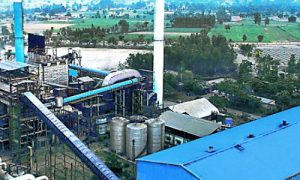World deficit says sugar prices should be higher

Global sugar production in 2024-25 is forecast at 174.8 million tonnes, the lowest since 2018-19, with a 5.5 million-tonne deficit driven by declines in Brazil, India and Pakistan. Despite tight supplies, raw sugar prices are down 36% since November 2023 due to stock drawdowns, speculation, ethanol shifts and broader economic factors.
TRAVERSE CITY, MICH. — The lowest global sugar production in 2024-25 suggests world raw sugar futures should be much higher rather than near four-year lows, José Orive, executive director of the International Sugar Organization (ISO), said Aug. 4 at the International Sweetener Symposium, sponsored by the American Sugar Alliance.
Global sugar production was forecast at 174.8 million tonnes, down 6.5 million tonnes, or 3.6%, from 181.3 million tonnes in 2023-24, compared with average annual production of 174.5 million tonnes since 2017-18, and the lowest since 2018-19, as declines in Brazil, India and Pakistan more than offset increases in Thailand, China and the European Union, Orive said. Global cane sugar production was forecast at 134.9 million tonnes, down 8 million tonnes, or 5.6%, from 2023-24, while beet sugar was forecast at 39.9 million tonnes, up 1.5 million tonnes, or 3.9%. Cane sugar accounts for 77% and beet sugar 23% of global production in the current year.
Sugar consumption in 2024-25 was forecast at a record-high 180.3 million tonnes. Post-COVID consumption growth since 2021-22 has averaged 4 million tonnes, or 2.2%, annually, but growth in 2024-25 was just 1 million tonnes, or 0.58%. Population growth has been the primary driver of higher consumption, Orive said. Slower global sugar growth has been prompted by use of GLP-1 weight-loss drugs, ultra processed food, reformulation and regional changes in population growth. Orive estimated that about 50 million consumers globally are using GLP-1 drugs.
Global sugar consumption contracted between 2016 and 2020, Orive said, due to introduction of sugar taxes in several countries, growing health concerns and the influence of government policy, shifts in consumer preferences, and reformulation by food and beverage manufacturers to meet consumer preferences, new labeling laws and nutritional targets. About 8.9 million tonnes of sugar consumption was lost during the COVID pandemic, he said.
The ISO forecast a global sugar deficit of 5.5 million tonnes in 2024-25, the largest deficit in nine years, compared with a surplus of 2 million tonnes in 2023-24.
Brazil, with exports of 32.1 million tonnes in 2024-25, accounted for more than half of total global exports, forecast at 63.3 million tonnes. Thailand was a distant second with exports of 7.6 million tonnes. China and Indonesia are the largest global importers.
“The world market is extremely dependent on Brazil for raw sugar supply,” Orive said.
Despite the large global deficit, global raw sugar prices have declined 36% since November 2023, Orive said, despite the fall in global production in 2024-25.
“Stock drawdowns, speculative market behavior, shifts in ethanol diversion and broader economic factors contributed to weaker sugar prices despite the constructive fundamental of a market deficit,” he said.
The outlook for 2025-26 (October-September in the Northern Hemisphere, April-March in Brazil) calls for a small surplus of 588,000 tonnes, with production projected at 182.5 million tonnes, up 4.4%, and consumption at 181.9 million tonnes, up 0.9%. Higher production in India and Thailand is expected to more than offset a slight decline in Brazil. Global exports were projected at 63 million tonnes in 2025-26.
“Sustained higher prices are needed to drive investment in sugar production and logistics around the world,” Orive said.
Crystalization capacity has increased over the past few years in Brazil due to earlier strong sugar prices and a shift away from cane-based ethanol (to more corn-based ethanol). India’s crystallization capacity also has increased, but in part due to incentives to boost ethanol distillation capacity. Expansion also was noted in Tanzania and Egypt.
Global destination refining (using imported raw sugar) was expanding or has expanded in the past three years in Canada, Oman, Algeria and China.
Orive said current sugar market drivers include weather concerns in Europe, Russia and Brazil (bullish), China’s buying pace behind schedule and Pakistan’s importing of refined sugar (bullish).Shifts in ethanol production have resulted in less use of sugar to make the biofuel, with total ethanol production forecast at 120.7 billion liters in 2025, up 1.9% from the prior year. Although the United States is the world’s largest ethanol producer (60.7 billion liters forecast in 2025), nearly all of it comes from corn (none from sugar), while most of the rest of the world uses cane sugar to produce ethanol. Brazil is shifting from cane sugar-based to corn-based ethanol, with increases in India and other countries still using sugar. Brazil’s mills have the ability to shift between sugar and ethanol. Orive estimated the ethanol parity level (the price of sugar at which it becomes more profitable to make ethanol instead of sugar) in Brazil at 15.5¢ per lb. New York raw sugar futures recently were near that level, but more recently have been trading above 16¢ a lb.
To Read more about Sugar Industry continue reading Agriinsite.com
Source : Baking Business















